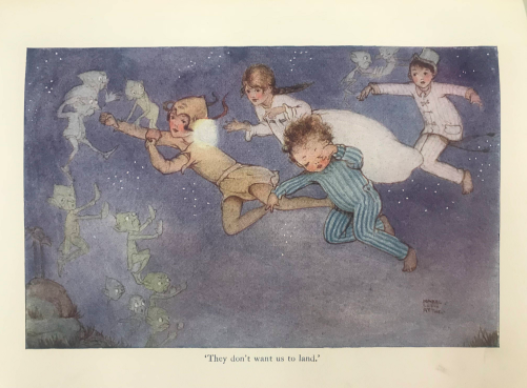Children’s literature, magazines, interactive pop-up books and more have found a home in the Elizabeth Nesbitt Collection at Hillman Library. Visitors of the 320 Reading Room can experience the nostalgic scent of old parchment and the feeling of holding history in their hands.
The Elizabeth Nesbitt Collection, which is available to Pitt students, contains children’s books primarily from the United States and the United Kingdom, and features more than 12,000 materials including children’s literature, artifacts and media. According to curator Clare Withers, the collection plays an important role in learning about the past.
“What is something made out of? How is it made? Is it made to last? Was it made with the cheapest paper or was it made with parchment? How did it get into people’s hands?” Withers said. “All of those things can tell you a lot about who created it and why it was saved. Those are all things people think about when they come to archives and special collections.”
Withers said each piece tells a different aspect of history and culture that can provide a window into the past.
“Primary sources — each one is created at a very specific moment in time. It’s a window into that specific time period and culture,” Withers said. “When you look at materials for children, it can be really telling because a lot of times, it’s very much about codes of conduct and behavior and what is correct. I think it is a way to come to an understanding of the time period — not somebody telling you, ‘This is what this means,’ but figuring it out for yourself.”
Pitt’s Archives & Special Collections contains sub-collections, such as the Rare Books Collection, the Renaissance Collection and the Elizabeth Nesbitt Collection. Students can view parts of these collections in the 320 Reading Room with the library staff’s permission.
Rachel Lavenda, head of the Rare Books Collection, said despite the range of people and collections, each person is able to discover and pursue their own passions and individual interests.
“Even though people come in with their own research, the library offers an opportunity for students to pursue something that they’re interested in within archives and special collections,” Lavenda said. “We had an event last week that was ‘Archival Scholars in Action.’ It was a presentation and a panel … It was wonderful to see them [scholars] actively using it.”

One of the Archival Scholars is sophomore Caroline Waters, an English literature major. Waters has been working closely with the Elizabeth Nesbitt Collection after receiving the Archival Scholars Research Award for the 2022 spring semester.
Waters said her research focuses on the representation and construction of gender in 19th century children’s literature and how it shaped cultural and generational thinking. Waters said, like today, children’s media played a major impact on societal beliefs and gender stereotypes.
“I’m looking at passages and illustrations that reinforce the gender stereotypes of the day. In doing so, it’s broadening to this wider question of, ‘How does any media from any time period shape the children that it’s meant to influence?’’ Waters said. “That question is relevant for everyone, and looking specifically at the 19th century, those gender stereotypes that were established by children’s annuals still persist today.”
Also through her research, Waters said she discovered the physical copies of historical texts hold personal stories of their own.
“I get to work with physical annuals from the 19th century, and I found little treasures in there,” Waters said. “There are sketches, people’s names and I found a pressed flower inside of one. Working with physical materials allows you to see how [the texts] were loved and what purposes they’ve been used for.”
Due to the age of the materials in the collections, preservation and maintenance is key in ensuring the collections are kept pristine. Although these books may seem timeless, Lavenda said they require special care.
“On a basic level, the way you take care of the atmosphere and environmental control in our vault space is we try to have a cooler temperature and steady humidity levels so that things don’t get too dry — and they don’t get wet,” Lavenda said. “A really big piece of it is you want to keep it the same, you don’t want high humidity one day and then the next day be really low.”
The Elizabeth Nesbitt Collection and other categories of the Special Collections are special not only for their history, but because of what they can provide for the Pitt community, Lavenda said.
“Nowhere else has this particular mixture,” Lavenda said. “There might be something about ours that’s different from the others. This is a real opportunity to physically engage and interact with things you would normally see in a museum behind glass.”
Waters said the Elizabeth Nesbitt Collection is not only a means of research, but a way for her to connect the past with the present.
“There’s something crazy about holding something that some person from the 1800s was also holding,” Waters said. “It reminds me that these texts might have been published in the past, but they’re still living and breathing and influencing us today.”
The post Students, researchers explore children’s literature through Elizabeth Nesbitt Collection appeared first on The Pitt News.
https://ift.tt/R5SNyJF





No comments:
Post a Comment